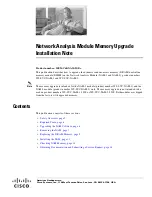
25
RAID System and RAID Modes
A Redundant Array of Independent (or Inexpensive) Disks (RAID) is a system that
utilizes multiple hard drives to share or replicate data among the disks. The benefit,
depending on the selected RAID Mode (combinations of disks), is one or more of
increased data integrity, fault-tolerance, throughput or capacity when compared to
single drives.
Striping
Striping (RAID 0) is a performance-oriented, non-redundant data mapping technique.
It combines multiple hard drives into a single logical unit. Instead of seeing several
different hard drives, the operating system sees only one large drive. Striping splits
data evenly across two or more disks simultaneously, dramatically increasing
performance.
Striping can be implemented in disks of differing sizes, but the storage space added
to the array by each disk is limited to the size of the smallest disk. For example, if a
220 GB disk is striped with a 200 GB disk, the size of the array will be 400 GB.
Striping is typically used for high performance applications, such as, video editing,
video playback, and 3D multimedia design. Although Striping is an easily
implemented, simple configuration, Striping should never be used for mission critical
applications. In Striping mode, if one disk in the RAID System fails, all data in all
installed disks will be lost.







































